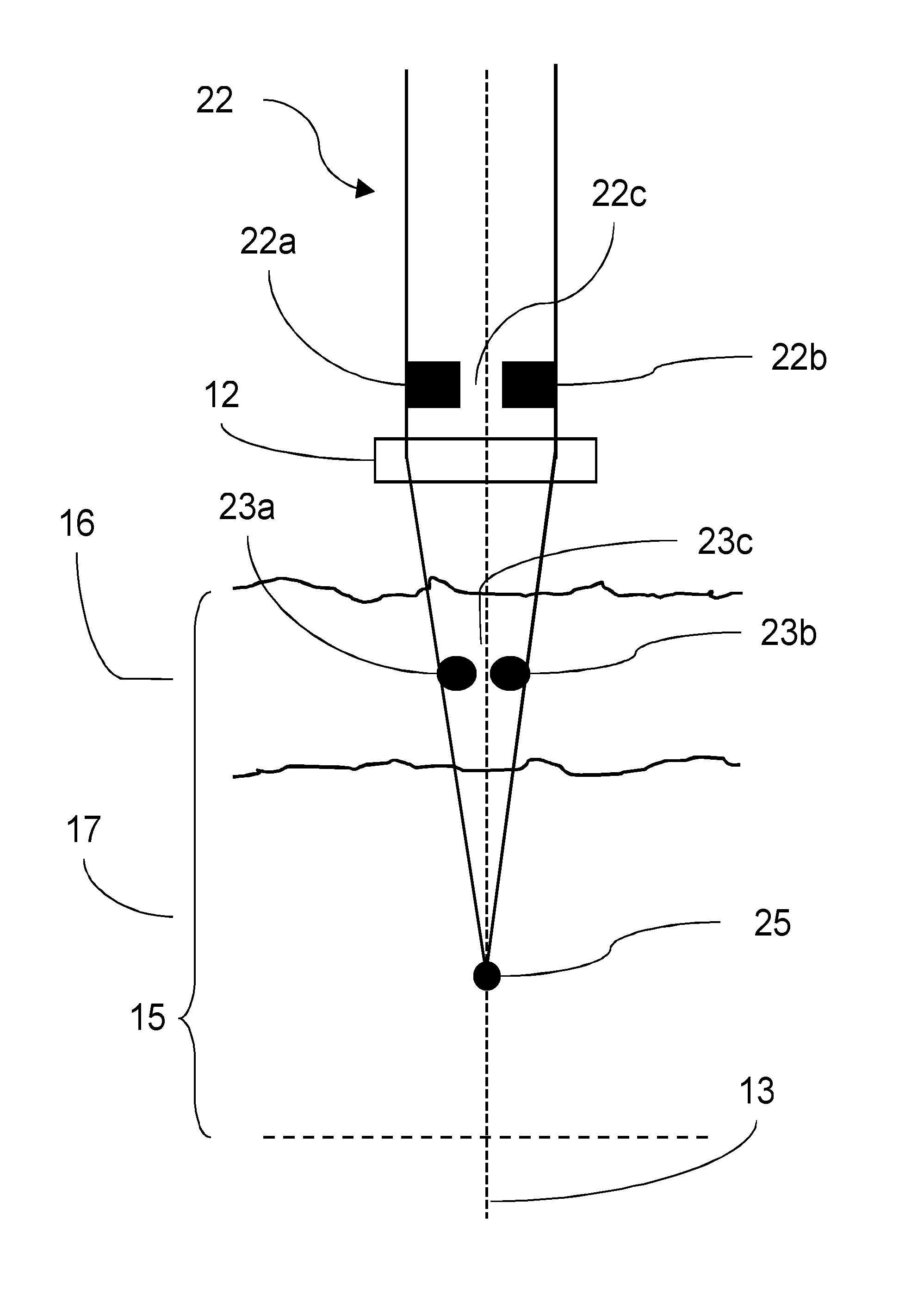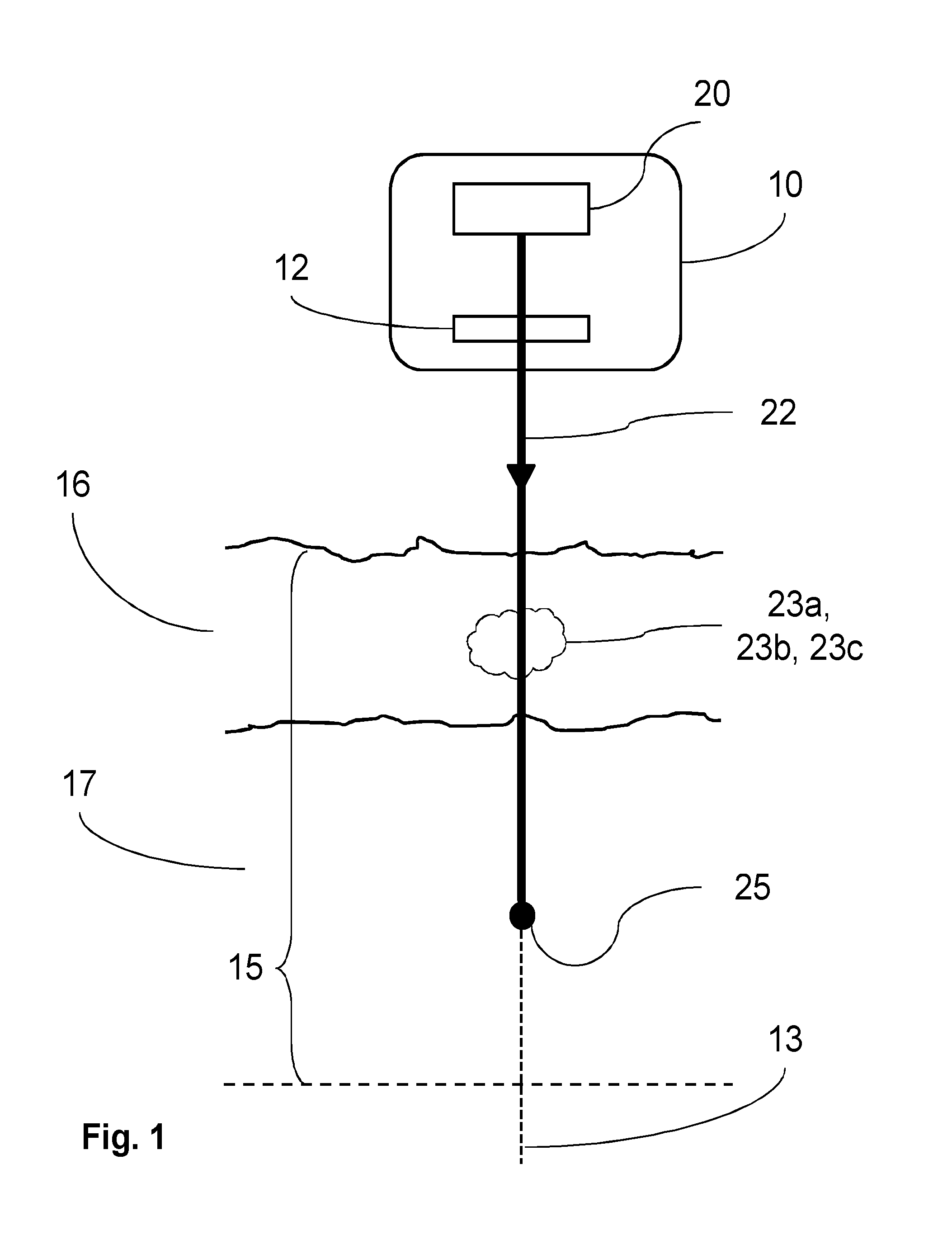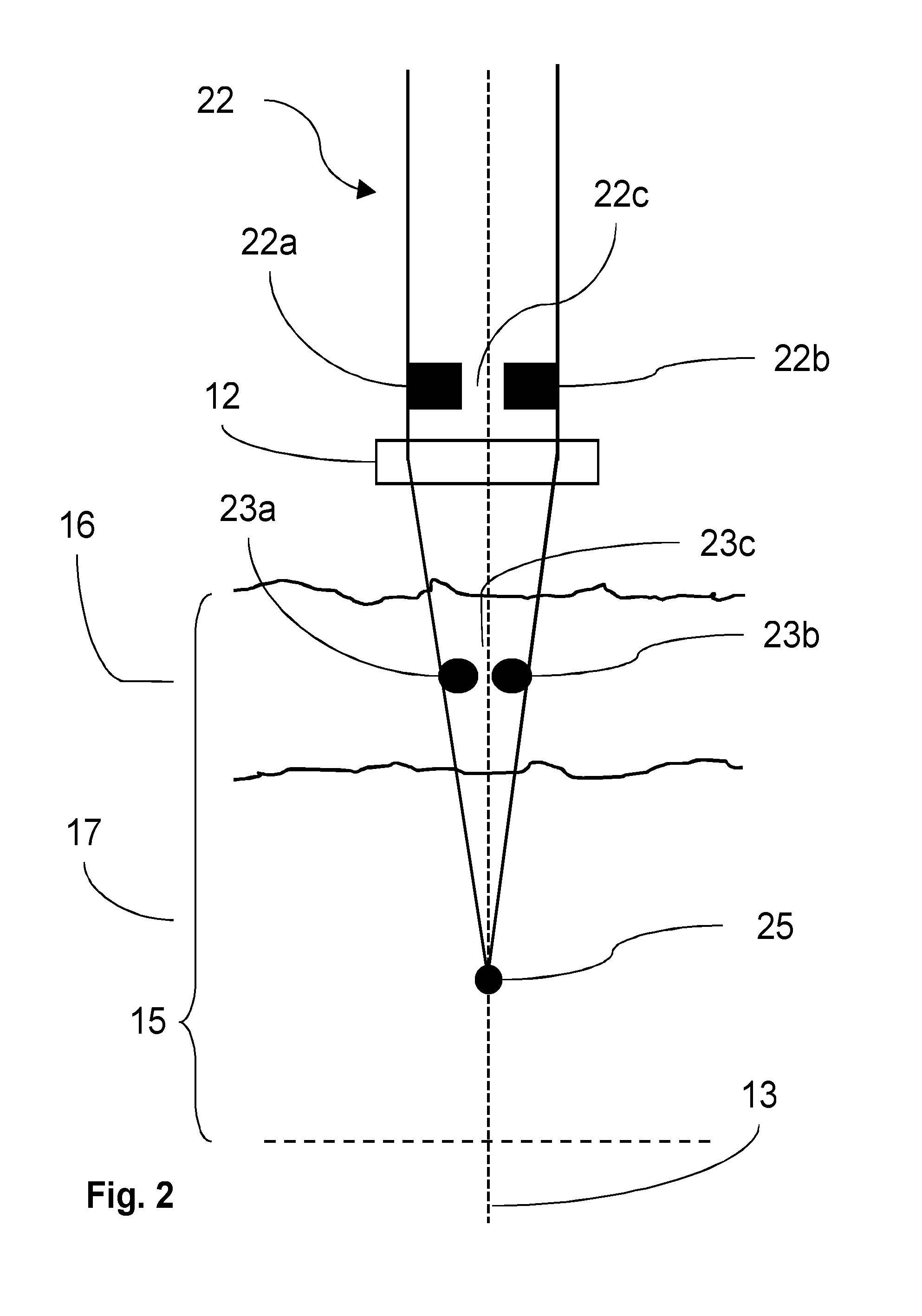Device and method for non-invasive treatemnt of skin using laser light
a laser light and skin technology, applied in the field of non-invasive skin treatment, can solve the problems of adverse skin reactions, skin pigmentation changes, and damage to the adjacent outer layer, and achieve the effects of reducing the degree of heating, preventing excessive temperatures, and reducing the intensity of laser ligh
- Summary
- Abstract
- Description
- Claims
- Application Information
AI Technical Summary
Benefits of technology
Problems solved by technology
Method used
Image
Examples
second embodiment
[0122]10 Skin treatment device[0123]12 Optical system[0124]13 Device optical axis[0125]15 Skin[0126]16 Epidermis layer of skin[0127]17 Dermis layer of skin[0128]20 Light source for generating laser treatment beam (22)[0129]22 Laser treatment beam[0130]22a First beam region of non-zero light intensity[0131]22b Second beam region of non-zero light intensity[0132]22c Third beam region of lower light intensity than the non-zero light intensity[0133]23a First skin region in the outer skin layer[0134]23b Second skin region in the outer skin layer[0135]23c Third skin region in the outer skin[0136]25 Focal spot[0137]30 Gaussian laser beam intensity profile[0138]35 Epidermal temperature profile when exposed to Gaussian intensity profile[0139]40 Flat-top laser beam intensity profile[0140]45 Epidermal temperature profile when exposed to flat-top intensity profile[0141]50 Intensity threshold[0142]55 Epidermal temperature threshold[0143]61 Intensity axis (vertical)[0144]62 Position in laser beam...
PUM
 Login to View More
Login to View More Abstract
Description
Claims
Application Information
 Login to View More
Login to View More - R&D
- Intellectual Property
- Life Sciences
- Materials
- Tech Scout
- Unparalleled Data Quality
- Higher Quality Content
- 60% Fewer Hallucinations
Browse by: Latest US Patents, China's latest patents, Technical Efficacy Thesaurus, Application Domain, Technology Topic, Popular Technical Reports.
© 2025 PatSnap. All rights reserved.Legal|Privacy policy|Modern Slavery Act Transparency Statement|Sitemap|About US| Contact US: help@patsnap.com



